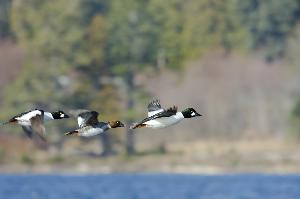Quantifying bird collision and avoidance at offshore wind farms
DHI United Kingdom (UK), in collaboration with NIRAS UK and BirdLife Denmark, has been awarded an innovative research project investigating collision risks of birds at offshore wind farms.

© Frank Leung DHI United Kingdom (UK), in collaboration with NIRAS UK and BirdLife Denmark, has been awarded an innovative research project investigating collision risks of birds at offshore wind farms.
The problem of birds colliding with turbine blades is one of the most significant predicted environmental impacts from offshore wind farms. In order to minimise the future risk of offshore wind farm developments failing to gain consent, further robust evidence on avoidance behaviour is required.
As part of the Offshore Renewables Joint Industry Programme (ORJIP) – managed by the Carbon Trust – this technically challenging project will seek to quantify and interpret avoidance behaviour of key marine bird species. The results will help refine the assumptions used to estimate bird collisions and avoidance behaviour at offshore wind farms. We will be responsible for the technical and scientific aspects of the two-year project, including:
- deploying bird radars at offshore wind farms to track bird movements outside and inside the wind farm
- collecting and analysing data in collaboration with BirdLife Denmark, with NIRAS UK identifying species with bird observers
- conducting predictive modelling to apply the project results to other offshore wind farms outside the study area
The radars will be linked to high-resolution Target Acquisition and Designation cameras to maximise the usefulness of the data. First, the radars will identify potential bird targets. The cameras will then pick up the radar signal and record video while tracking bird movements. We believe that this innovative approach is a vital step towards developing the evidence base – as well as a benchmark – for future monitoring approaches. The principal study area will be Vattenfall’s Thanet Offshore Wind Farm off the coast of Kent in South-East England. We will also collect data at other sites around the UK and Europe to extend the validity of the results.
This is a major research project within the ORJIP portfolio and exceeds the scale of previous UK projects on bird collision and avoidance. It aims to provide the scientifically robust approach needed to ensure that future applications and Environmental Impact Assessments (EIAs) are founded on evidence-based conclusions. It will be the largest bird project we have undertaken since our work on the ongoing Fehmarn Belt Fixed Link.
Read more